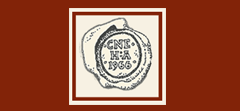Abstract
Newfoundland’s Avalon Peninsula contains many examples of petroglyphs, historic graffiti and inscriptions/engravings dating from the 17th to 20th centuries. This paper highlights the sites of Kingman’s Cove (CfAf-25) and Brigus South (CgAf-21), the computational photography and conservation techniques used in their recording, and current interpretations on who made them, why, when, and what they represent. The results show the broad potential of historic inscriptions for understanding the movements of people who are often poorly represented in the documentary record, the importance of peripheral landscapes and features as foci for self-expression, place-making and remembrance, and the need for innovative methodologies to record these ephemeral and endangered features. Furthermore, these sites are often of continued relevance to local communities (whose intimate landscape knowledge is typically required for their study) while also bearing a contemporary legacy as seen in nearby similar spatially-focused areas of modern graffiti.
Recommended Citation
Gaulton, Barry C.; Tapper, Bryn; Williams, Duncan; and Teasdale, Donna
(2021)
"The Avalon Historic Petroglyphs Project: Investigating Historic Graffiti and Petroglyphs on Newfoundland’s Eastern Avalon Peninsula,"
Northeast Historical Archaeology:
Vol.
50
50, Article 4.
Available at:
https://orb.binghamton.edu/neha/vol50/iss1/4


